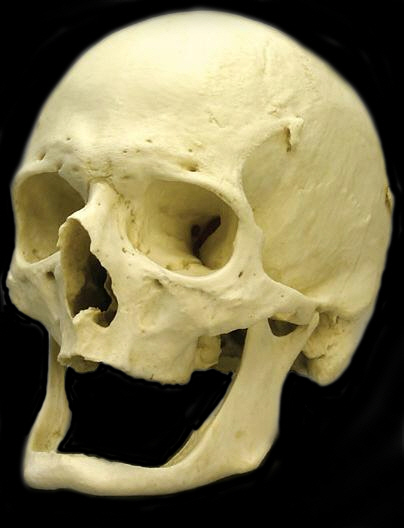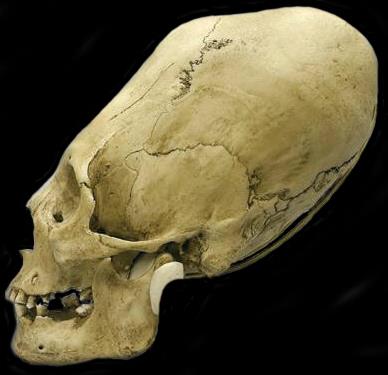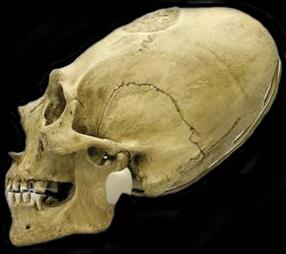







Anthropology - Reference Skeletal Anatomy




Main Index

Skeleton



Skeleton
Skeletons as Forensic Evidence
By examining the image below to see how the fontanels, described grow and fuse with the other bones to form the sutures. Although these sutures are as unique as fingerprints, as they cannot be seen antemortem (not without surgery, or a violent accident), they are not useful in terms of identification.
The sutures are, however, useful in terms of determining the approximate age of a skull. In terms of the sutures, as an individual grows older, the sutures ultimately completely fill in. The less filled in, the younger the person. This does mean that aging cause the bone to become harder or more dense. Age also brings on teeth loss, nother contribution for teeth loss within thew 21st Century is due to flossing, we lose BONE as well, and evidenceof this can be seen in the geriatric (elderly) skull below:
By examining the image below to see how the fontanels, described grow and fuse with the other bones to form the sutures. Although these sutures are as unique as fingerprints, as they cannot be seen antemortem (not without surgery, or a violent accident), they are not useful in terms of identification.
The sutures are, however, useful in terms of determining the approximate age of a skull. In terms of the sutures, as an individual grows older, the sutures ultimately completely fill in. The less filled in, the younger the person. This does mean that aging cause the bone to become harder or more dense. Age also brings on teeth loss, nother contribution for teeth loss within thew 21st Century is due to flossing, we lose BONE as well, and evidenceof this can be seen in the geriatric (elderly) skull below:

How do we lose bone? - See section Forensic Odontology
In cases where cultures have bound the skull, the sutures have had to move as the bones take on the new shape forced by the binding of the skull. Note the change in the coronal suture in the skull below:
In cases where cultures have bound the skull, the sutures have had to move as the bones take on the new shape forced by the binding of the skull. Note the change in the coronal suture in the skull below:

Copyright All Rights Reserved by Nigel G Wilcox E-Mail: ngwilcox100@gmail.com

Designed by Nigel G Wilcox
Complimentary Topics
The Paragon Of Metal Detecting
& Archaeology
& Archaeology
6. Menu
Pages

Powered By Sispro1
Member NCMD





















